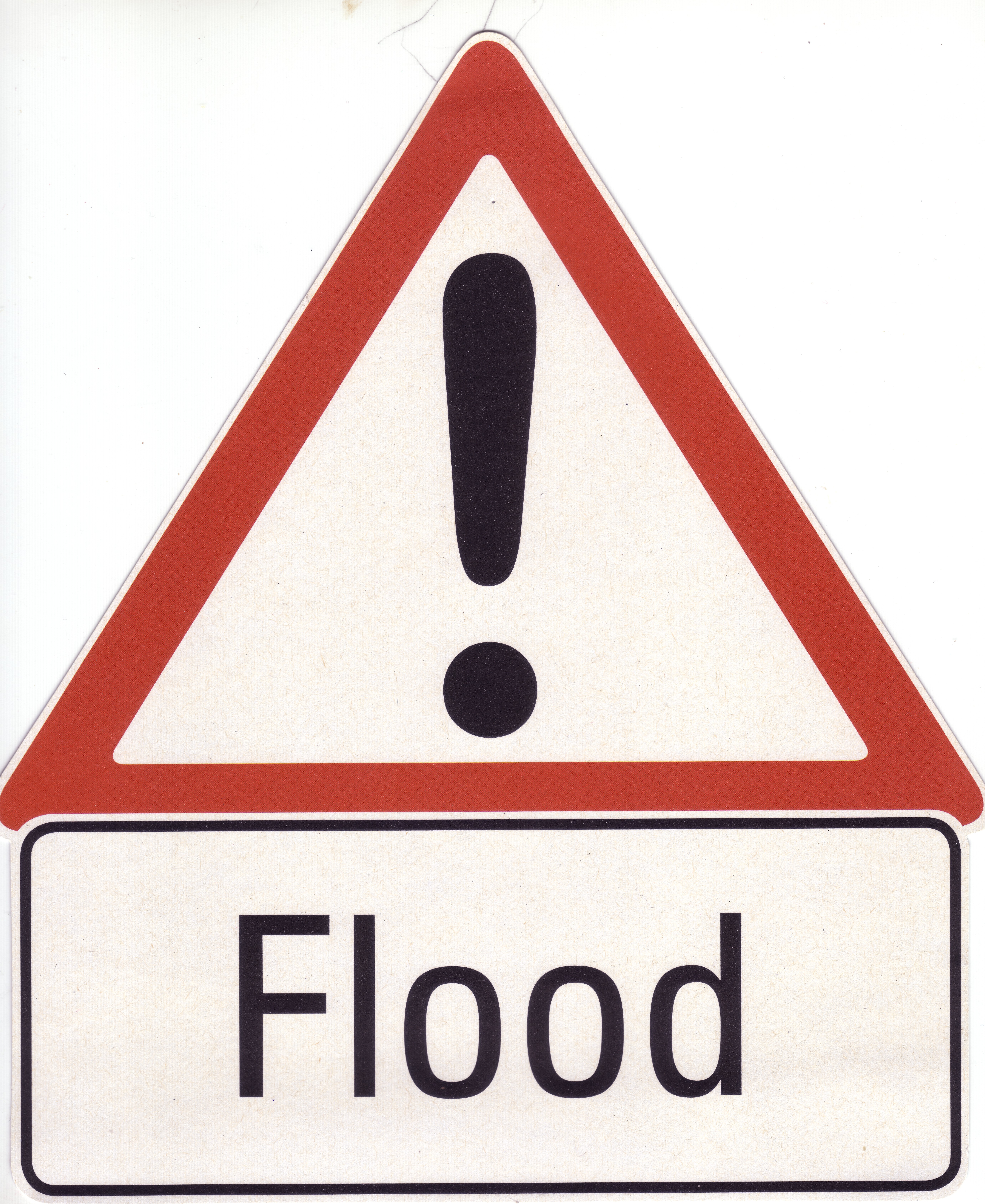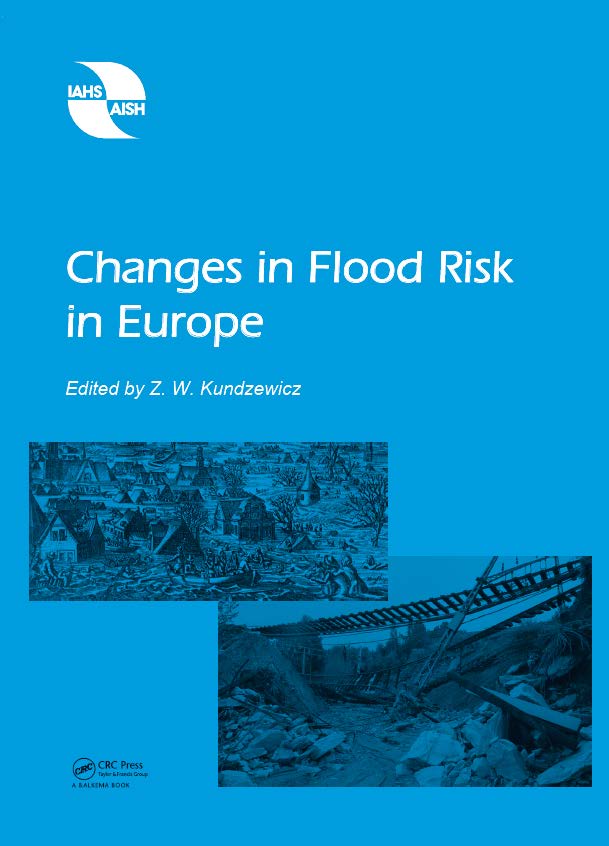IAHS News
Floods - a continuing challenge
|
Major floods are the most chronic and costly natural hazards in many countries and continuing work in flood related sciences and implementation of hazard-reduction policies is essential to constrain the associated damage. Several publications available from IAHS report innovative flood research and integrated flood risk management. The following are available via our online Bookshop |
|
|
Special Publ. 10 (2012) 978-1-907161-28-5 516 + xvi pp.
|
Changes in Flood Risk in EuropeEditor Zbigniew W. Kundzewicz
|
|
IAHS Publ. 357 (2013) ISBN 978-1-907161-35-3, 470 + x pp.
|
Floods: From Risk to OpportunityEditors A. Chavoshian & K. Takeuchi
|
Weather Radar and Hydrology
Editors Robert J. Moore, Steven J. Cole & Anthony J. Illingworth
Weather Radar and Hydrology concerns the monitoring and forecasting of rainfall over space and time, and how the pattern of rainfall is transformed by a varied landscape into surface water runoff and river flow across a city, region or country, and so has significant practical application across water resource functions, including flood forecasting and warning, flood design, urban drainage manage¬ment, water supply and environmental services.
A valuable record of current activity with >100 peer-reviewed contributions from WRaH 2011, Exeter, UK.
IAHS Publ. 351 (2012) ISBN 978-1-907161-26-1, 672 + xvi pp.
Risk in Water Resources Management
Editors Günter Blöschl, Kuni Takeuchi, Sharad Jain, Andreas Farnleitner & Andreas Schumann
Water resources management has to deal with incomplete knowledge of the current dynamics and the future evolution of water resource systems. Risk is a concept that helps in making management decisions under incomplete and/or incorrect knowledge by relating water-related hazards and their consequences. Risks related to floods and droughts, to the environment and to health, as well as economic and financial risk are encompassed by water resources management. It is not possible to completely eliminate uncertainty, but better under-standing of the sources and magnitude of the uncertainties involved in a particular project will clearly lead to improved decisions: this volume aims towards that end.
IAHS Publ. 347 (2011) 978-1-907161-22-3 276 + x pp.
Frontiers in Flood Research
Editors Ioulia Tchiguirinskaia, Khin Ni Ni Thein & Pierre Hubert
International experts provide new information and insights to the key issues and developments in present flood research. Scientific understanding of the flood phenomenon and of its potential impacts from the perspective of the engineering, operational, economic, social and ecological aspects of flood research, and with a focus on integrated flood risk management, is proposed.
IAHS Publ. 305 (2006) ISBN 1-901502-63-5 212 + xii pp.
Hydrological Sciences Journal
In addition, the following article is now free to view in HSJ at Taylor & Francis
Flood risk and climate change: global and regional perspectives by Z. W. Kundzewicz et al. (Dec. 2013)
Putting Prediction in Ungauged Basins into Practice
The second book resulting from the IAHS decade of PUB (Prediction in Ungauged Basins) is now published and is available in electronic or printed format.
Whitepaper: 5 Best Practices for Building Better Stage-Discharge Rating Curves
|
As an IAHS member, Aquatic Informatics invites you to read the new whitepaper, "5 Best Practices for Building BetterStage-Discharge Rating Curves." A reliable rating curve is one that is credible, defensible, and minimizes re-work. This paper outlines 5 modern best practices used by highly effective hydrographers. Rediscover the science of building the best possible rating curves and gain the highest confidence in your calculations of flow. Read this whitepaper to learn how to: 1. Have a Plan - Modernize your approach to leverage a world-class quality management system, network design, technology, training, and data management software. 2. Understand the Science - Make better informed decisions guided by a clear understanding of the science and engineering principles behind rating curve development. 3. Systematically Analyze the Data - Use a hydraulics based approach to determine curve shape and slope, period of applicability, measurement error, and explainable deviations. 4. Manage the Variance - Understand the sources of variance, both systematic and random, by adaptively managing your monitoring plan. Mitigate for variable hydraulic conditions to provide timely, evidence-based, results. 5. Qualify the Derived Discharge Results - Qualify your results by maintaining and disclosing (1) comprehensive records of all data processing steps and (2) data approval levels and quality grades to provide evidence that the curve is reliable. Stream hydrographers are held accountable for their work. Highly skilled hydrographers follow a best practices approach, making it easier to perform, explain, and defend their work. Reliable rating curves result in better information for decision makers, enabling the optimal use, management, and protection of water resources. To learn more, read Stu’s whitepaper here. Meet the Author Read Stu's 5 Best Practices for Building Better Stage-Discharge Rating Curves to learn how you can build reliable rating curves in a timely, efficient, and effective manner. Aquatic Informatics Inc. |
Sent to you by IAHS, on behalf of Aquatic Informatics.
This is not an endorsement of the whitepaper or the AQUARIUS hydrological data management system.
ICCE: International Commission on Continental Erosion
Future meetings of ICCE
FACETS OF UNCERTAINTY, STAHY'13 Workshop
STAHY'13 Workshop, Kos Island, Greece, 17-19 October 2013
The topical workshop of the International Commission on Statistical Hydrology (ICSH-IAHS, formally STAHY) was held in Kos Island, Greece, 17-19 October 2013, jointly with two prestigious events: the annual EGU Leonardo Conference, and the Hydrofractals Conference that takes place every 10 years. Each of the above events had its own dynamic, but they all focused on a common idea: the uncertainty in natural processes. The different views of the three components were apparent during the Kos convention.
RSHS'14 and ICGRHWE'14
Call for abstractS
The 3rd Remote Sensing and Hydrology Symposium (RSHS'14) and the 3rd International Conference of GIS/RS in Hydrology, Water Resources and Environment (ICGRHWE'14)
Guangzhou, China, 24-27 August 2014
The conference is organized by the International Commission on Remote Sensing (ICRS) of IAHS and Sun Yat-Sen University, China; the co-organizers are the University of Swansea, UK and the University of Nebraska, USA.
Hydrological Sciences Journal Editorial Retreat
Prior to the Facets of Uncertainty meeting in Kos, the Co-editors of HSJ, Zbyszek Kundzewicz and Demetris Koutsoyiannis, convened an Editorial Retreat with 17 of the journal's Associate Editors, Frances Watkins and Cate Gardner from IAHS Press and representatives from Taylor & Francis, to focus on the journal. It was the first event of this type and made possible because T&F provided funding.



